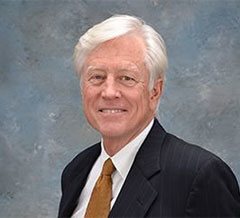Highway Guardrails Meant to Protect, Actually Pose Great Danger
In early 2014, Jay Traylor was headed home from helping a friend with some yard work. Exhausted, he briefly drifted off to sleep behind the wheel. He awoke just in time to see his vehicle headed straight for a guardrail on the side of the highway. On impact, the guardrail pierced the front of the SUV he was driving and penetrated the cabin, slicing through his legs. Through military training he has received while in the Marine Corps, he was able to survive. But his life will never be the same.
Guardrails are safety devices along many interstates and highways in America, designed to keep vehicles that have left the road from encountering an even more dangerous situation such as a steep drop-off, or other lanes of traffic. Guardrails are made to absorb the force of an auto accident, and deflect the energy in other directions so that the vehicle does not take the full force of the impact. Because of the potential for grave injury or loss of life, it is imperative that guardrail meet a host of safety standards before they can be approved for use.
There are a few companies that manufacture the bulk of the supply of guardrails in the United States. One of these companies is Trinity Industries of Texas, who has been in the metal manufacturing business for decades. Trinity Industries was named in several lawsuits brought by crash victims who contended that a design change made by the company was to blame for guardrail failure that contributed to lost limbs and lives. Trinity acknowledged that a change was made to the design of the ET-Plus guardrail system in late 2005, which shortened the dimensions of one of the pieces to four inches instead of five. However, Trinity contended that the design of the guardrail system was not compromised as a result of this change and that these guardrails still passed industry tests for safety. Because they still met the standard the Federal Highway Administration was not notified at the time the design change was made.
In October 2014, Trinity was found guilty of defrauding the U.S. government for failing to notify the Federal Highway Administration of its design change and was ordered to pay over $175 million in damages. This amount is expected to increase according to statutory mandates to over half a billion dollars. Most of that money will be received by the Federal government, although a portion will go to one of Trinity’s competitors, Josh Harman. Harman was the primary plaintiff in the lawsuit against Trinity. Trinity Industries is appealing the decision.
If you or a loved one have been injured in a Florida guardrail accident, contact us today at 877-FL-INJURY (877-354-6587) for a free initial consultation.
James O. Cunningham
 Since 1977, personal injury lawyer James Cunningham has provided effective legal advocacy to people who are injured through the negligent actions of another person or entity throughout the Central Florida area. He fights to obtain recoveries for his clients’ physical and emotional pain and suffering and pursues his clients’ personal injury cases with a commitment to excellence and impeccable preparation.
Since 1977, personal injury lawyer James Cunningham has provided effective legal advocacy to people who are injured through the negligent actions of another person or entity throughout the Central Florida area. He fights to obtain recoveries for his clients’ physical and emotional pain and suffering and pursues his clients’ personal injury cases with a commitment to excellence and impeccable preparation.


 James O. Cunningham
James O. Cunningham  Mr. Cunningham is an excellent and knowledgeable attorney.
Mr. Cunningham is an excellent and knowledgeable attorney.